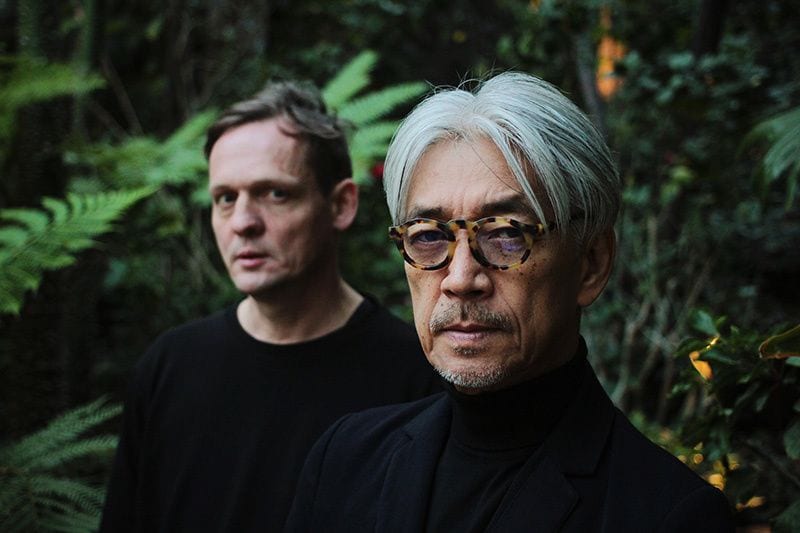
In his 1977 book
The Tuning of the World, acoustic ecology pioneer R. Murray Schafer lays out two main categories of music based on the impulses leading to their creation: Dionysian, where “music is conceived as internal sound breaking forth from the human breast”, and Apollonian, where it is “external sound, God-sent to remind us of the harmony of the universe”. He pits the irrational and hedonistic against the precise, man’s flaws against the divine perfection he perceives as inherent in the natural world.
On
Glass, pioneering composers Alva Noto and Ryuichi Sakamoto see no such dichotomy as they embark on an electronic exploration. Trailblazers Noto (known for his visual art career as Carsten Nicolai) and Sakamoto have crossed paths a few times over the last couple of decades. Serving as the catalyst for their collaboration here is late architect Philip Johnson’s Glass House, a minimalist building set in the pristine nature of New Canaan, Connecticut. For what would have been Johnson’s 110th birthday and the unveiling of contemporary artist Yayoi Kusama’s installation “Dots Obsession – Alive, Seeking For Eternal Hope”, the two musicians were invited to perform. The recording that resulted, Glass, is a live one, totally improvised and inspired by an extended moment spent within structure, art, and nature.
Believe it or not, all this background is important; while it tells little about how
Glass actually sounds, it sets the scene – and an understanding of the scenery is central to an understanding of Glass.

The release is a single track, nearly 37 minutes long. As it begins, it sounds hollow, even the lightest tapping amplified by the corners of the duo’s surreal setting. Background sound borders on noise, sounding like anything between a fast-moving river, steady high winds, or an impenetrable urban crowd. In this, Noto and Sakamoto emulate the very beginning of glass, erosion, and compression of rocks into sand into hot, liquid streaks before cooling into clarity. High-pitched notes add an occasional sheen, like light glinting off the edge of a pane; at times, it sounds as though a particularly even-paced finger is running over the rim of a clean chalice. These are soothing moments in a tunnel of intense ambiance, a break from the constant drone.
Less than halfway through come the sounds of glass on glass, Kusama’s dots turned to razor-sharp rainfall against the windows. They taper off for a while as a synthetic chorus of wordless echoes takes precedence, until they return at the end, increasingly dense, a storm. And then – the dots turned rain turn to diamonds, then to stars, and
Glass emerges from its earthly structures and transcends. By the time it comes to its end, the piece is weightless, all stretched-out signals and hums. Noto and Sakamoto may have begun their piece in one man’s historic home, but their destination is a cosmic one. Glass embraces earth, sky, construction, and the heavens. It serves as a testament not only to the performers’ innovative spirit, but to their understanding of their place in the wider world, and that world’s place in existence. 37 minutes may seem long for a single track, but the scope of this track is even more impressive, and in the end, Glass is a single, exquisite moment in the whole of time.

